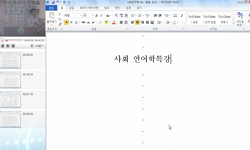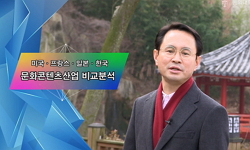This study aims to explore the linguistic and cultural characteristics of Busan’s old downtown. To achieve this, the linguistic landscapes of three major traditional markets—Gukje Market, Bupyeong Kkangtong Market, and Jagalchi Market—were colle...
http://chineseinput.net/에서 pinyin(병음)방식으로 중국어를 변환할 수 있습니다.
변환된 중국어를 복사하여 사용하시면 됩니다.
- 中文 을 입력하시려면 zhongwen을 입력하시고 space를누르시면됩니다.
- 北京 을 입력하시려면 beijing을 입력하시고 space를 누르시면 됩니다.
https://www.riss.kr/link?id=A109472884
- 저자
- 발행기관
- 학술지명
- 권호사항
-
발행연도
2024
-
작성언어
-
- 주제어
-
KDC
701
-
등재정보
KCI등재
-
자료형태
학술저널
- 발행기관 URL
-
수록면
87-121(35쪽)
- 제공처
-
0
상세조회 -
0
다운로드
부가정보
다국어 초록 (Multilingual Abstract)
This study aims to explore the linguistic and cultural characteristics of Busan’s old downtown. To achieve this, the linguistic landscapes of three major traditional markets—Gukje Market, Bupyeong Kkangtong Market, and Jagalchi Market—were collected and analyzed as representative commercial spaces of this area. The key findings are as follows: First, Hangeul was the most frequently used script type across all three markets and appeared in the largest font size, reflecting a general preference for Hangeul and the Korean language regardless of business type. Second, store names consisting of four to five syllables were the most common. Third, Gukje Market displayed varied linguistic landscapes across its streets, with the street adjacent to Gwangbok-dong exhibiting the most linguistic diversity. Fourth, the temporary stall signs in Bupyeong Kkangtong Market’s night market exhibited the greatest linguistic variety, showcasing a broad range of languages. Fifth, in Jagalchi Market, where the proportion of foreign tourists is relatively high, signs were predominantly in Hangeul, but menus were provided in multiple languages to accommodate linguistic diversity among visitors. Finally, the use of regional dialects and various regional names in store signage reflected Busan’s local identity and migration-driven history.
목차 (Table of Contents)
- 1. 서론
- 2. 조사 지역 정보 및 범위
- 3. 자료 수집
- 4. 결과 및 분석
- 5. 결론
- 1. 서론
- 2. 조사 지역 정보 및 범위
- 3. 자료 수집
- 4. 결과 및 분석
- 5. 결론
- 참고문헌
동일학술지(권/호) 다른 논문
-
- 한국사회언어학회
- 편집부
- 2024
- KCI등재
-
- 한국사회언어학회
- 장은영(Eun Young Jang)
- 2024
- KCI등재
-
- 한국사회언어학회
- Jinsok Lee(Jinsok Lee)
- 2024
- KCI등재
-
재독한인 1.5세의 언어 정체성에 대한 질적 연구: 소속감 희구 여정을 중심으로
- 한국사회언어학회
- 박정하(Jung Ha Park)
- 2024
- KCI등재





 스콜라
스콜라






